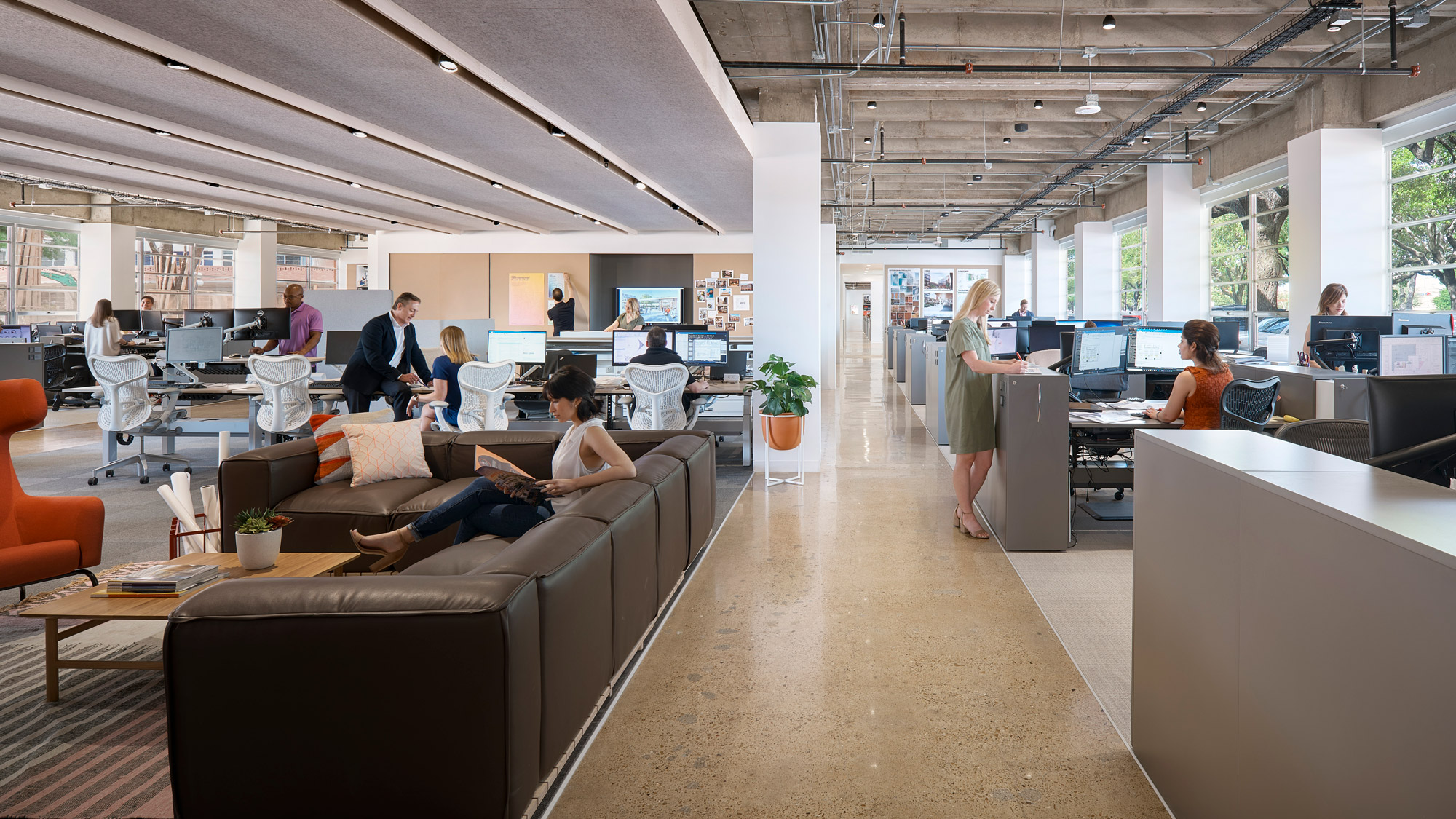Creating an Organizational Appetite for Sustainable Design
The workplace has undergone substantial examination and change in recent years: today’s office environment looks a lot different than the typewriter pools and cubicle farms of old. From completely open environments to mobile and hoteling desk-sharing strategies, the modern workplace takes many different forms.
At the same time, sustainability has become a primary concern for stakeholders and organizations. The popularity of systems like LEED shows that some organizations recognize how design can help their own mission of creating a more sustainable world. Others, meanwhile, have yet to harness the potential for sustainability and well-being to improve people’s experience at work.
As people’s attitudes towards sustainability evolve alongside new modes of working, there is a real need for organizations to be intentional about how they implement any new changes. They must be thoughtful about the ways they adapt to industry trends and organizational goals, while staying conscious of the ways those changes will affect their culture and people. Combining a change management approach with an increased focus on green design and well-being helps ensure that any sustainable organizational change will stand the test of time.
On a MissionJust as no two workplaces are the same, each organization is different when it comes to priorities, goals, attitudes, and culture. Defining these attributes can be a challenge for any company, but they are crucial for communicating the mission and the purpose of the work.
Every aspect of a new workplace can represent the strange and unfamiliar for employees, and organizations face the challenges of inspiring employee buy-in and sparking engagement throughout the transition.
The Case for ChangeWhile no workplace change is entirely seamless, there are strategies to increase probabilities of successful workplace connection: change management uses communications and engagement to ensure employees are aware of the changes affecting them and are prepared to transition into a new workplace environment.
Change management isa constantly evolving, but effective practice: according to Prosci, which developed the industry standard for practitioners, effective change management can make a project up to six times more likely to be on-schedule and on-budget. Applying these practices to an organizational change can boost employee engagement and satisfaction, contributing to the long-term success of the transition.
Building Stakeholder ConsensusA successful change management approach involves establishing consensus, supporting engagement, and promoting demonstrated benefits for each employee. Given the uniqueness of each workplace, the approach is different for each organization and environment. Communications and engagement should be tailored to best reach affected employees, and changes should be integrated into project management to ensure a holistic approach.
Most importantly, organizational leaders and stakeholders should be encouraged to buy into the change, demonstrate new ways of working, and champion the benefits of the change. This top-down engagement helps personalize the change, reducing the potential for disruption and increasing the organization’s comfort level with the transition.

Even with a robust approach in place, a typical workplace change can become more complicated when sustainability gets involved. But a new workplace model can also represent an opportunity to commit to new sustainability and well-being goals, increasing their impact in the process. When these goals are established, the organization is more accountable to rise to those standards. From cultural changes to changes in the physical environment, sustainable interventions in the workplace can require a different level of engagement.
Engaging End UsersSustainability has been increasingly integrated into design, operations, and delivery — and best practices have evolved to comply with rating system requirements. According tothe latest study from Market Research Future, the green building market is set to grow into a $260 billion industry by the end of 2023. Organizations are recognizing the increasingly large role sustainability plays in our daily lives, especially when it comes to the workplace.
Green and What it MeansWhile sustainability is hardly a new concept in the built environment, it means something different to each employee and each organization — there is no one-size-fits-all solution. Because a greener workplace can often require a more hands-on approach, it’s important for an organization to define how sustainability and well-being factor into the company’s larger mission. Taking a thoughtful approach to the transformation can play a big part in embracing the new environment and reflecting organizational commitment to sustainability in the new space.
Beyond design interventions, sustainability should be reflected in operations and practice. Combining an effective communication strategy to a design approach can ensure a successful — and sustainable — result.
Communicating a sustainability-specific mission may yield higher levels of engagement if the mission is publicized. Accessible education and resources – like Gensler’sWorkplace Performance IndexandResearch Institute– can broaden reach, spark interest, and increase engagement with sustainable change. Gensler’s research focuses on the ways in which space, people, and culture intertwine to create engaging and memorable environments.
Putting It All TogetherOne major way to make organizational change tangible is to emphasize the impact for each employee. In change management, we often talk about “what’s in it for me?” – paying attention to the personal aspect of a change can make transformation less scary and more manageable. When we talk about sustainability, it’s easy to forget the personal aspects and structural change can often feel like it requires personal sacrifice.
By examining the beneficial aspects of green organizational change — especially those related to individual well-being — a sustainable change management approach can bridge the gap between organizational decision-making and successful employee engagement.
